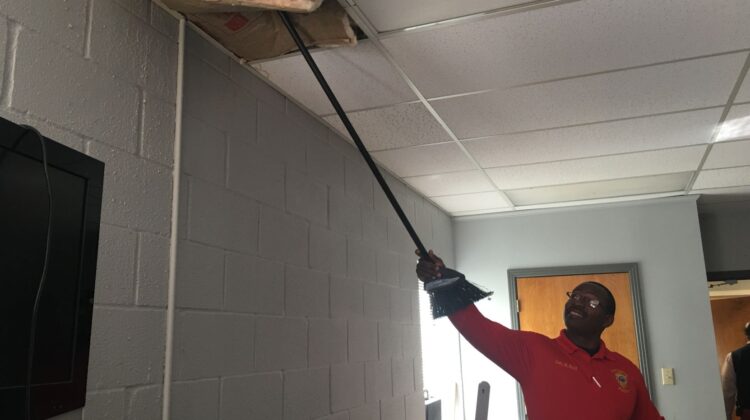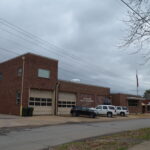

This week marks three years since I toured the Covington Police Department to chronicle the working conditions inside their headquarters.
In summary, it was unsafe and morale crushing.
When it rained water ran down the walls inside the building. It’d caused the plaster to bubble, the ceiling tiles to bulge and covers of the fluorescent lights to brown beneath pooled water.
There was black mold growing upstairs – where some the detectives’ offices were located – standing water on the flat roof, rusted gutters, awnings covered in mold and mildew.
The building was not compliant with the Americans with Disabilities Act requirements; there was no privacy, no security.
It was, in almost everyone’s words, an embarrassment.
In late February 2017, the board voted to have a spatial study conducted.
The following week, the state fire marshal’s office inspected the building and recommended a slew of repairs which needed to be completed within 30 days. City attorney Rachel Witherington recommended the police department leave the building as soon as possible for the safety, health and well being of officers and the general public.
The board voted to build a new facility “as soon as possible” and set an 18-24-month timeline. The run-down East Pleasant building was vacated in August 2017, splitting the department between three different locations.
It was a move that was supposed to be temporary, while the new building was being constructed, but three years later the city hasn’t even broken ground or secured funding.
It’s not that city leaders have been dragging their feet, it’s just that trying to make this happen correctly has been like trying to fit square pegs into round holes. At every turn there’s been a new obstacle, one frustration after another.
It was hard to decide on a location. Then-Chief Buddy Lewis wanted to relocate to an 18-acre parcel of land owned by the industrial development board near the county’s justice complex while city leaders decided the 4.2-acre grammar school property in the center of town would be more centrally-located.
And then it was discovered the property’s used was limited to parks and recreation only, thanks to a 1978 grant. The city would have to apply for a conversion from the state, an expensive process that would also involve relocating the 40-year-old tennis courts and constructing a park somewhere in the city to make up for destroying the “park” at which they intended to build the new station.
Funding was also an issue. Initial estimates suggested the project would cost $3-4 million, but the costs rose to near $6.6 million when other factors, like the conversion, were involved. Already in debt, the city could not afford the payments on its own and, though they seemed promising, grant applications for funding fell through.
It became known as the Buddy Lewis Police Palace – yes, people really said that – and became a contentious topic around town. City leaders, residents and Lewis debated the size of the building and its amenities. How much room did the department need in order to plan for future growth and expansion? Were they too landlocked at the grammar school, despite its great location? Do they need everything put into the design plans? What was this business about an underground shooting range?
Even now it’s an overwhelming project to review whenever there’s a new update to report. I’m feeling optimistic about this one, though.
Last week I walked into a meeting and saw A2H’s Pat Harcourt and Jeff Eakes, a projector screen and smiles. After six months with no public updates, they were back to talk about a new design, a new location and a new plan for funding.
Why not put a tornado-safe shelter in the new design, put the new building on the 18-acre parcel by H.T. Hackney (which would be given to the city by the ID board, by the way, and is the location Lewis always wanted) and apply for a Federal Emergency Management Agency hazard mitigation grant to help pay for it?
Instead of millions of dollars, if the grant is awarded, the station could potentially cost taxpayers less than half a million. FEMA would potentially pay 75 percent, TEMA would chip in 12.5 percent and the city would be responsible for the remaining 12.5 – of which the value of the land could be used as a match.
This, plus the furnishings, may cost an estimated $500,000.
Alderman Keith Phelps said, “We’re discussing a change in funding that could be one of the best financial moves this city has ever made.”
Maybe so.
Or maybe it’s another square peg.
Time will tell, but I have a good feeling about this.






Leave a Reply